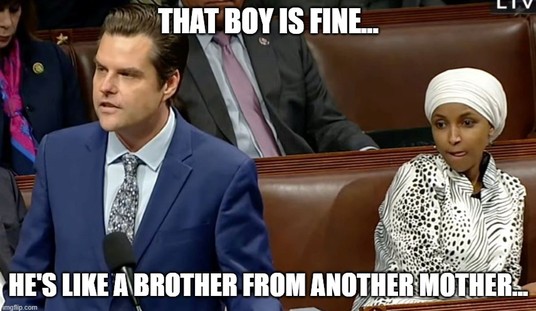This is an interesting story that probably wouldn't get much notice inside or outside the state of Wisconsin, but we're glad Jonathan Turley brought it to our attention.
The Wisconsin Supreme Court voted 4-3 in Sojenhomer v. Village of Egg Harbor that a sidewalk is not a “pedestrian way.” Lawyers in Wisconsin are already sending around Mr. Bumble-like harrumphs to the decision, which is a testament to the ability of judges to ignore plain meaning…
— Jonathan Turley (@JonathanTurley) June 20, 2024
Here's background from Turley:
At issue was the effort of the state to create more sidewalks. Faced with resistance from homeowners, the state was using eminent domain to simply condemn the land and claim it for sidewalks. However, Wisconsin has strong protections for home owners, including statutes expressly stating that the power of eminent domain must be “strictly construed” against the government.
Moreover, there is a statute that expressly bars the use of eminent domain to take property for “pedestrian way[s].” It defines a “pedestrian way” as “a walk designated for the use of pedestrian travel.”
To every Bumble and non-Bumble alike, that would seem to describe a sidewalk, which is defined by Merriam-Webster as “a usually paved walk for pedestrians at the side of a street.”
But the liberal justices on Wisconsin's supreme court, including Justice Rebecca Frank Dallet decided to play fast and loose with the definition of 'sidewalk' and 'pedestrian travel'. From Justice Dallet:
Reading the text of this section as a whole, we find several indications that the definition of pedestrian way does not include sidewalks. For starters, both § 346.02(8)(a) and (b) use the terms “sidewalk” and “pedestrian way” in ways that signify that each term has a separate, non-overlapping meaning. … Section 346.02(8)(b) states that pedestrian ways shall be treated ‘as if’ they were sidewalks for utility installation and assessment purposes. The phrase “as if” signals that one category (pedestrian ways) should receive the same treatment as a different category (sidewalks). That is the same way the legislature used “as if” in, for example, Wis. Stat. § 53.03, which states that Wisconsin courts “may treat a foreign country as if it were a state” in guardianship proceedings. Just as foreign countries are not states, but should be treated as if they were for guardianship purposes, pedestrian ways are not sidewalks, but should be treated as if they were for utility-installation and assessment purposes.
Recommended
What is the purpose of a sidewalk if not a means of 'pedestrian travel'?
Wisconsin Supreme Court Justices’ homes are now homeless shelters.
— AmishDude (@TheAmishDude) June 20, 2024
That's how this works now.
If a sidewalk isn't a pedestrian way, does that mean people can drive cars, ATVs, horse-drawn carts, etc. on a sidewalk?
— 💎PicaDilly LOLz 💎 (@admirathoria) June 20, 2024
That's a logical conclusion one could draw from this court's ruling.
Decisions such as this, that are nothing more than a court legislating from the bench and nullifying existing law, should be grounds throughout the state and fed court system for impeachment and removal from office.
— S David Sultzer (@s_sultzer) June 20, 2024
We agree.
I see people walking on them all the time. Must be a cheap fake. The entire judicial system is a joke now.
— Eric Cook (@Greentownmayor) June 20, 2024
A big joke, but not a funny one.
Well if it's not a pedestrian way I guess I can drive my vehicle on it. 😂🤡
— - Josh - (@WEAPONFORTRUTH) June 20, 2024
And you can point to this ruling as giving you permission to do so.
It's also a testament to the fact that capturing the judiciary obviates the need for legislators, executives, or elections.
— Rick Saunders (@twobenjamins) June 20, 2024
Polling suggests more than 90% of the legal profession is rabidly leftist. In time, these future judges and justices will recreate this nationally.
Yes they will.
What on earth. https://t.co/55zTgNntO7
— Avi Woolf, Wilderness Conservative🐺 (@AviWoolf) June 20, 2024
We have no idea.
If I am correct, Wisconsin voters put their SC in place.
— eye95 ن 🇮🇱 (@eye95) June 20, 2024
Vote stupidly, get stupid rulings.
Wisconsin voters are generally stupid. Especially voters in Milwaukee. They are horrible. https://t.co/GIUZzet630
Won't get an argument from this writer, who lives in Milwaukee.
This is plainly where the leftist judiciary is heading; we saw this with the bump stock dissent. Just pretend words mean whatever you want them to. https://t.co/7ITTVNdVc6
— Mark Hemingway (@Heminator) June 20, 2024
Of course it is. It's positively Orwellian.

























Join the conversation as a VIP Member